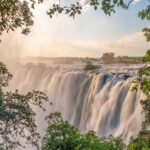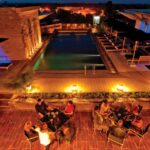Mauritania is home to the second-largest camel market in Africa, a symbol of the country’s enduring connection to desert life and trade.
Its capital, Nouakchott, rises from the Atlantic edge like a mirage that decided to stay.
Once a quiet fishing village, the city has grown into a meeting point for Saharan nomads, fishermen, traders, and travelers seeking new routes across West Africa.
Here, life moves between dunes and sea.
Camels cross the horizon at dawn, wooden pirogues return from the Atlantic with the morning catch, and the call to prayer drifts over the hum of traffic.
Nouakchott doesn’t overwhelm with glamour; it draws you in with authentic energy, warmth, and rhythm.
This Nouakchott travel guide is for travelers who crave real experiences
Markets of Nouakchott
Grand Marché

The Grand Marché of Nouakchott is your first dive into everyday life in Mauritania.
When you walk under the shaded stalls, you’ll see fabrics dyed deep blue and ochre, leather bags and sandals being finished by hand, and silver-filigree jewelry that catches the sunlight.
Locals know it simply as the city’s main marketplace, and they come early.
Here’s a good tip: many vendors expect you to bargain.
If they ask for 2,000 MRU (Mauritanian Ouguiya) for an item, you might start around 800-1,000 MRU and meet somewhere in the middle.
Bring cash. Card payment? Rare.
Camel Market

Photo source: Vianney Le Caer
Just outside the city you’ll find the Camel Market, a different kind of scene entirely.
Camels line up, prospective buyers inspect them, and the air vibrates with calls and laughter. This is one of the largest camel-trading spots in Mauritania.
It’s dusty. It’s alive. And you’ll feel a connection to traditional desert life in an urban fringe.
For photography, go early when light is softer and the action is busiest.
Dress modestly and stay aware of your surroundings, camels can be unpredictable and paths can be uneven.
READ ALSO: Mali Travel Guide: History and Cultural Heritage
Coastal Moments: Port de Pêche
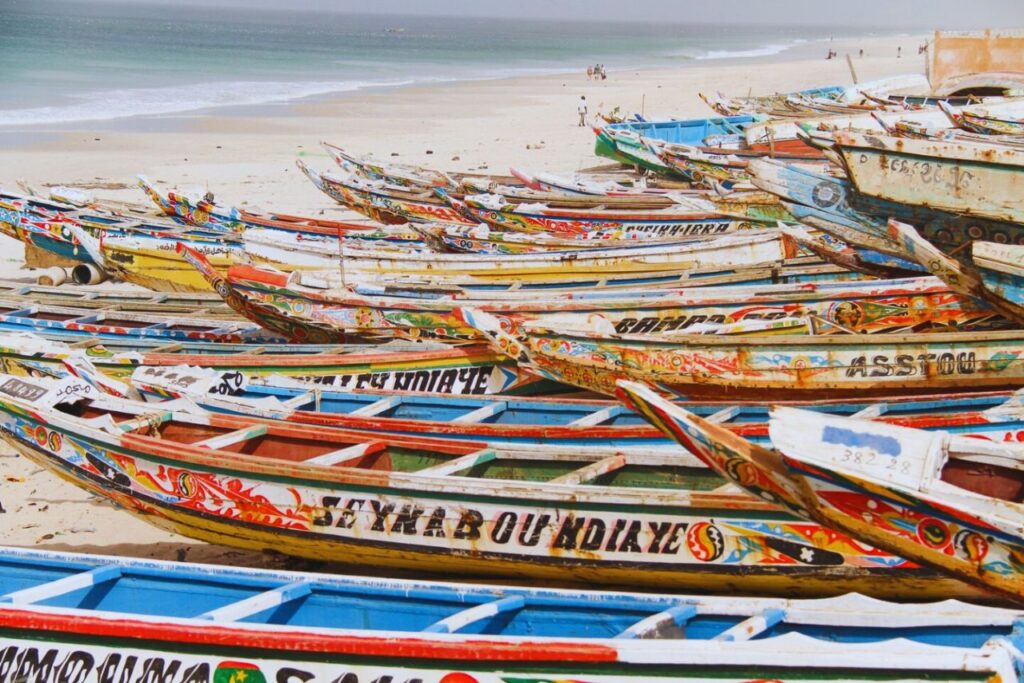
On the coast, you’ll feel the sea again.
At the Port de Pêche, wooden pirogues return with the morning catch, nets are emptied, and trays of fresh fish are spread out on the sand.
It’s a working harbor, lively and a little rough around the edges.
Beyond the port, the beach stretches.
Pull up a seat at a café, order grilled fish, taste the salt and smoke in the air, and listen to the Atlantic breeze.
The dunes from the desert roll toward the shore in places, making this coastline distinct.
Affordable? Yes. Real? Absolutely. From the market to the waves, you’ll watch the city and sea breathe together.
Tips for the coast
- Arrive at the port around sunrise for the full scene.
- Swimming? Stick to populated parts, as currents can be strong.
- Choose cafés that show the catch. That’s often your best evidence of freshness.
- The chill of early evening on the beach brings its own magic.
Desert Journeys
Azoueiga Sand Dune

Photo source: tourmauritania
Nouakchott is the launchpad for true Saharan adventure. From here, you shift gears entirely.
A 4×4, a local guide and you’re on your way into the Sahara-fringed lands of Mauritania.
One of the standout spots is the towering Azoueiga Sand Dune (sometimes spelled Azoueigua).
You’ll climb dunes, stand where the horizon stretches forever, and feel the desert’s pulse.
Terjit Oasis

Photo source: tourmauritania
Then there’s the peaceful Terjit Oasis, a surprise green pocket in the desert with palms, water, and shade.
You’ll walk, you might sit and watch, and breathe deep.
This route is about contrast: from the buzzing markets to the wide silence of sand and stars. It stretches your senses and resets your idea of scale.
Practicalities & experience
- Hire a 4×4 with a driver/guide. Roads are rough, and signs are minimal.
- Pack sun protection, plenty of water, and sturdy shoes. The desert demands respect.
- Plan at least two nights if you can: one dune camp and one oasis stay.
- Local guides show you hidden spots and keep you safe.
- The cost may be higher than city stays, but the value; unmatched.
READ ALSO: Ouagadougou City Guide (Burkina Faso): Art, Culture, and Music Scene
Other Must-See Destinations in Mauritania
Chinguetti, a UNESCO World Treasure

Photo source: Wikipedia
Deeper into the Adrar region lies Chinguetti, one of Mauritania’s seven UNESCO World Heritage Sites and a former crucial center for trans-Saharan trade and Islamic scholarship.
This ancient city, founded in the 13th century, is a testament to the resilience of human civilization against the relentless encroachment of the desert.
Today, Chinguetti is famous for its collection of ancient libraries, which house thousands of fragile manuscripts on subjects ranging from science and law to mathematics and religious texts.
These documents offer a priceless, tangible link to the medieval Islamic world.
Banc d’Arguin National Park

Photo source: Tripadvisor
For a completely different kind of journey, turn north from Nouakchott along the coast to the Banc d’Arguin National Park.
This remote coastal park is a sanctuary where the Sahara’s dunes meet the Atlantic, creating one of the world’s most important sites for migratory birds.
This is a place of unbelievable ecological significance.
Millions of birds flock to this unique wetland, making it a birdwatcher’s dream.
The local Imraguen people, who have lived in harmony with the park’s environment for centuries, are the only ones permitted to fish here.
Taking a boat trip with an Imraguen guide allows you to witness their traditional fishing methods and experience the incredible abundance of the ocean in a truly sustainable, timeless way.
Iron-Ore Train
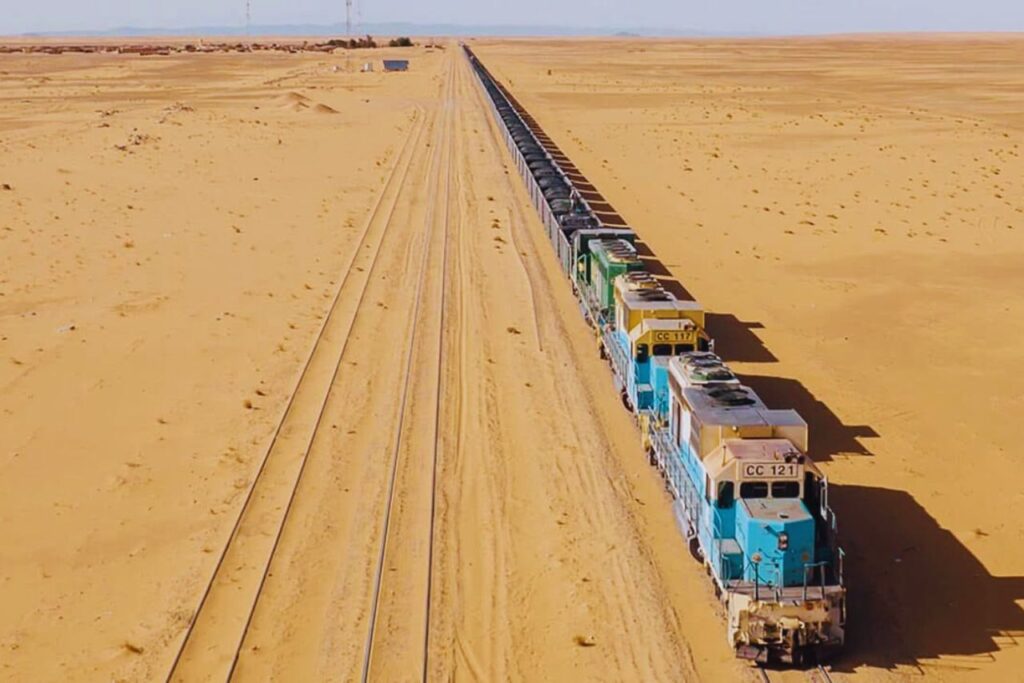
Photo source: Africa is Home tourism center
One of the world’s longest freight trains runs here: the Iron Ore Train, from the mining town of Zouérat to the coast at Nouadhibou.
Travel adventurers who hop onboard say it’s raw, real and unforgettable.
You’re riding across remote desert terrain, cargo cars glinting in the sunlight, and vast spaces all around.
Tips: departure times vary.
Budget roughly €6 for the passenger section (if available).
Carry snacks, water, and layers for night. Check local transit and hopper guide forums for the latest rules.
Old Town of Ouadane
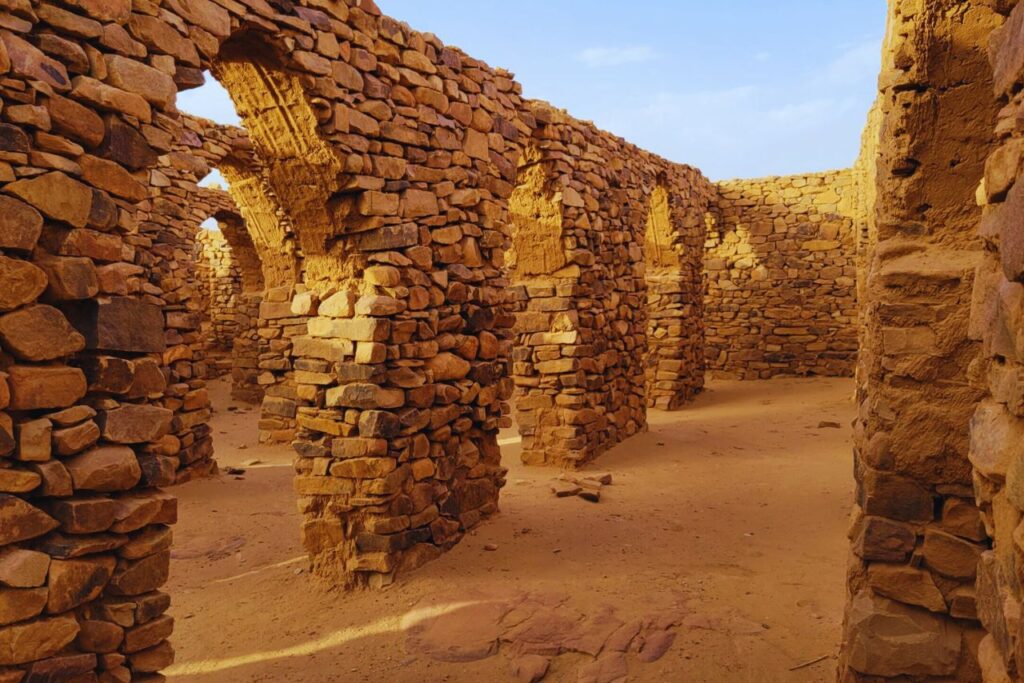
Photo source: tourmauritania
In the Old Town of Ouadane, you’ll walk in the dust of ancient caravan trails.
This UNESCO-listed town once sat at the crossroads of desert trade.
Mud-brick walls, ancient libraries, windswept courtyards. It rewards curious travelers who are willing to go beyond the easy route.
Time it right, stay overnight, and you’ll feel the stars press close in a way they don’t in the city.
“Eye of the Sahara” / Guelb er Richât
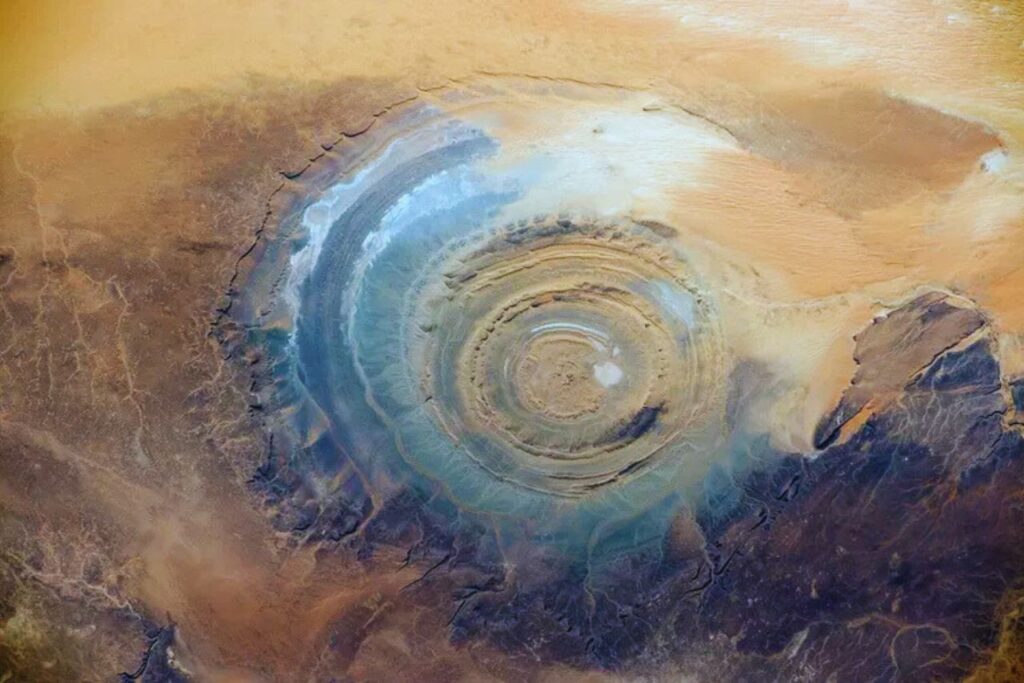
Photo source: thoughtco
Farther out, the surreal Richat Structure, also called the “Eye of the Sahara,” unfolds in circular ridges of rock, visible from space.
It’s a geological wonder and a fitting climax to a desert route that asks you to slow down and observe.
READ ALSO: Epic Gorilla Trekking in Uganda vs Rwanda: A Powerful Wildlife Experience
Staying and Moving
One of the great secrets of Nouakchott is its affordability.
While high-end luxury hotels exist (often priced over $100 to $200 USD), a comfortable, clean, and locally run hotel or guesthouse can be found for as low as $30 to $50 USD per night.
Budget travelers can find even lower prices, sometimes down to $10 USD for basic accommodation.
Getting around the city is simple and inexpensive.
Shared taxis, or taxis collectifs, are the main mode of transport, where you share the ride and the low fare with others.
For longer journeys, you’ll want to arrange a 4×4 vehicle and a trusted, experienced local guide, especially for desert trips to Chinguetti or the Adrar.
This is essential for safety and for gaining genuine cultural insight that no guidebook can provide.
The Mauritanian Way: Respect, Tea, and Hospitality
The most enriching part of your trip will be the kindness of the people.
The single most important custom is the tea ceremony, or attaya.
When you are offered tea, accept it. It is a fundamental gesture of welcome and friendship.
The ceremony is slow and deliberate, a chance to pause, reflect, and connect.
A common greeting is Salam Alaikum (Peace be upon you), to which the reply is Wa Alaikum Salam.
Showing respect for elders and displaying sincere curiosity about their unique culture will earn you immediate warmth and access to experiences far beyond the standard tourist trail.
Essential Mauritania Travel Tips (Customs, Language, Money)
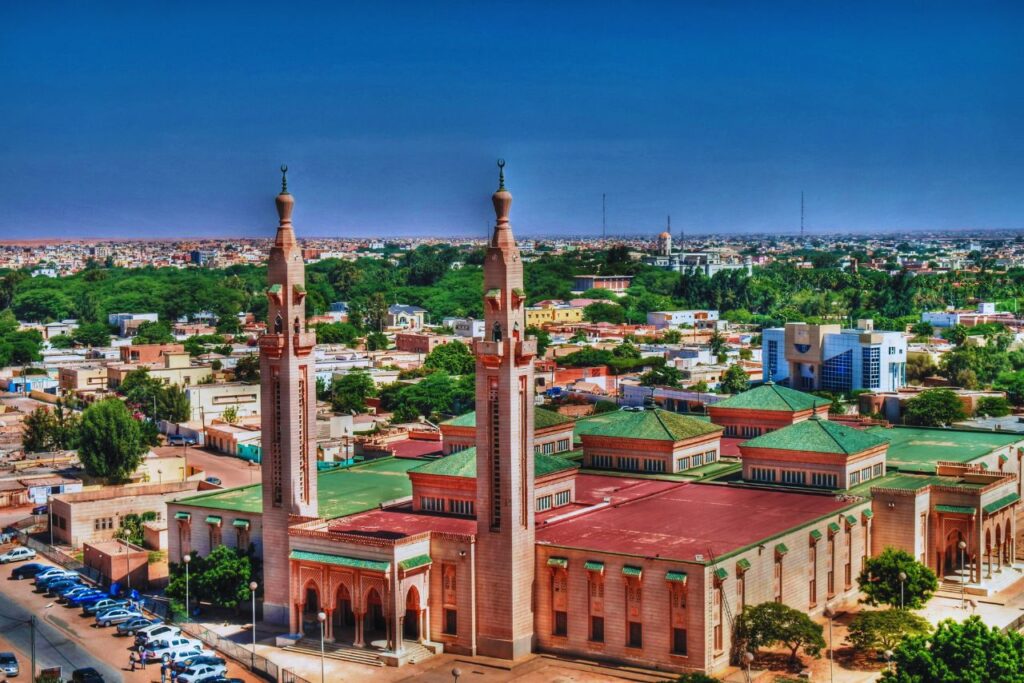
Religious and Social Context: Islamic Republic
Official Religion
Mauritania is an Islamic Republic, meaning Islam is central to its law, culture, and daily life.
Modesty
Dress codes are conservative and essential for showing respect, especially in public spaces like markets and government areas.
For Women: Always cover your shoulders and knees.
A loose-fitting top and a long skirt or trousers are ideal.
While locals wear the Malahfa (a long, colorful wrap), a simple headscarf is appreciated, though not strictly required for non-Muslim foreigners in all areas of the capital.
For Men: Wear long trousers. Shorts should be avoided outside of your hotel or private residence.
Public Behavior
Avoid public displays of affection. During the holy month of Ramadan, refrain from eating, drinking, or smoking in public during daylight hours.
Language and Communication
Official Language
Arabic (specifically the local dialect, Hassaniyya) is the official and national language.
Other National Languages: Pulaar, Soninke, and Wolof are also widely spoken by various ethnic groups.
The Bridge Language
French is widely used, particularly in business, government, and by the educated population.
This is often the easiest language for travelers to communicate in outside of basic Arabic greetings.
Key Phrases: Learn the basics:
- Hello/Peace be upon you: Salam Alaikum
- Response: Wa Alaikum Salam
- Thank you: Choukrane (Arabic) or Merci (French)
Currency and Money Management
Currency: The Mauritanian currency is the Ouguiya (code: MRU, symbol: UM).
Important Note on Exchange: In 2018, the Ouguiya was redenominated (1 new MRU equals 10 old MRO).
While this change is largely complete, you may occasionally encounter an old price, when in doubt, simply ask if the price is the old or new rate.
Unique Division: The MRU is one of only two currencies in the world not divided into a multiple of ten; it is divided into five Khoums (or Jums).
Cash is King: ATMs are rare and unreliable outside of major hotels or international banks in Nouakchott. Do not rely on credit cards.
Exchange: Bring major foreign currencies, preferably Euros (EUR) or US Dollars (USD), in cash.
You can exchange these at the airport, hotels, or licensed money exchangers in the capital.
Tipping (Baksheesh): Tipping is not mandatory but is certainly appreciated, especially for good service in restaurants, by drivers, and particularly for local guides.
A small tip of about 10% in a restaurant or a small, round-up amount for a taxi driver is a kind gesture.
Traditional Clothing
Men’s Attire (Drâa/Boubou): Men famously wear the Drâa (or Boubou), a wide, flowing robe with large, open sleeves, often paired with a turban (Cheche or Haouli) to protect from the sun and sand. You will see these everywhere.
Women’s Attire (Malahfa): Women wear the Malahfa, a five- to six-yard-long piece of colorful fabric draped around the body and over the head. It is vibrant and beautiful and the traditional mark of Moorish women.
Social Practice: Leblouh
Context: Leblouh (the practice of force-feeding young girls to achieve corpulence) is a deeply concerning, controversial, and harmful traditional practice that is still reported to occur, primarily in rural areas of Mauritania.
Modern Attitudes: In urban areas like Nouakchott, the practice is widely condemned by the younger, more educated generation and women’s rights campaigners.
However, it remains connected to traditional standards of female beauty and marriageability in some isolated communities.
Traveler’s Note: As a visitor, this is a sensitive and complex cultural issue.
It is not appropriate to raise or discuss this topic with casual acquaintances or guides unless they bring it up first, and even then, approach the subject with sensitivity and respect for the complexity of local social norms.
Focus your interactions on the visible, positive aspects of Mauritanian culture and hospitality.
Final Thoughts
Mauritania is not the easiest country to explore, but that’s exactly what makes it unforgettable.
Nouakchott may feel raw and unpredictable at times, yet its markets, coastline, and desert gateways offer some of the most authentic experiences in West Africa.
You don’t just pass through this city, you learn from it, and it stays with you long after you’ve left.





